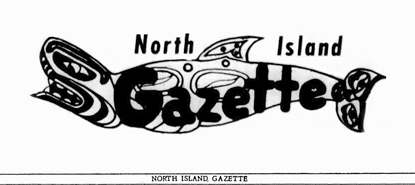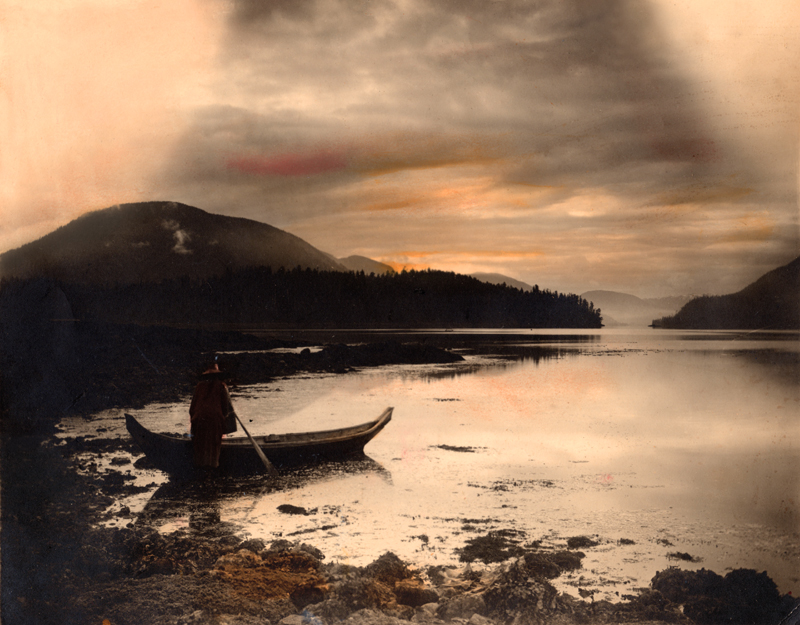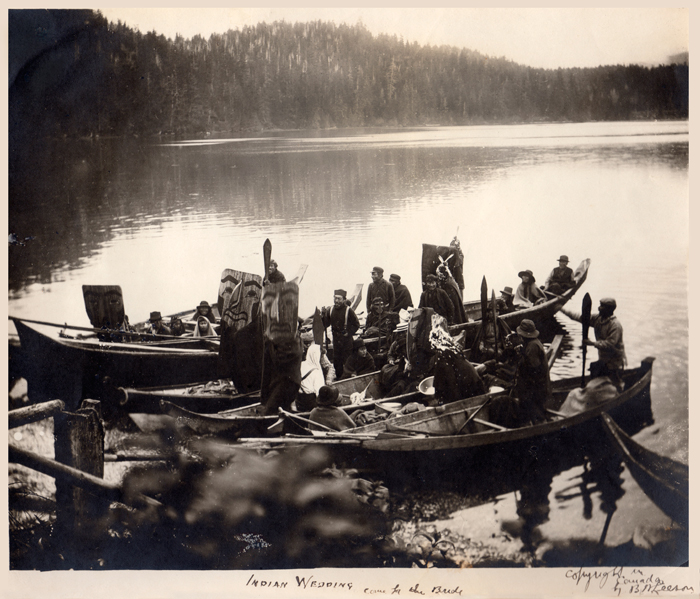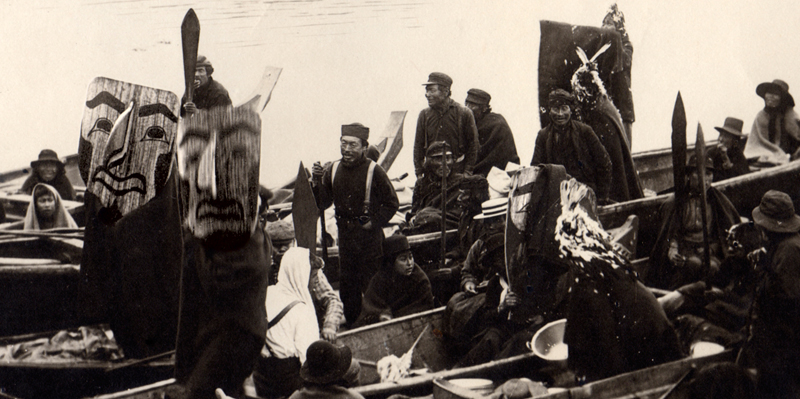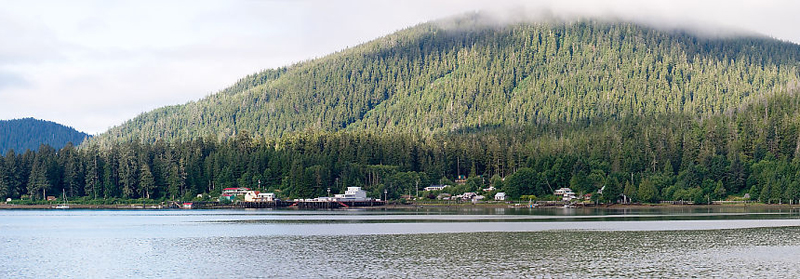North Island Gazette – September 1973
comad February 8th, 2016
This article is reproduced by kind permission of
“North Island Gazette”
Box 458 (7305 Market Street), Port Hardy, B.C., V0N 2P0
1-250-949-6225
(article is about Charles Loftus Bland)
“His Lifetime Was Aimed At Brotherhood”
They weren’t really boxers. Their proper name was “The Order of Literary, Patriotic, Harmonious, Fists” but to the young British Army lieutenant, he was taking part in the ‘boxer’ rebellion. It was 1900 and he was in China. The ‘boxers’, upset by the exploitation of their country by European foreigners, had begun the year before, encouraged by empress Tzu Hsi, to harass the outsiders who were exploiting their country.
British, French, Russian, American, German and Japanese troops were sent in to put down the uprising. The lieutenant wasn’t really concerned with war. He was only there because of the demands of his family. After all his lineage went back to 1333 when Patricius de Bland raised ten men-at-arms and one hundred archers for the Wapentake at Ewe Cross. (in the West Riding of Yorkshire, England.) Family crest included a ducal coronet and three arrows and the motto “When the Fates Call”. His father and two of his five brothers were generals and the other brothers held other posts in the army.
He was with an intelligence unit, but that was only secondary with him. His main interest lay in the books he had read before, and which he had brought with him. They were the works of the Russian writer Leo Tolstoy. True happiness, Tolstoy believed, could only be achieved by stripping one’s soul bare of all the artificialities that civilization had imposed on natural man, including both church and state, and by returning to primitive christianity, following the inner light which leads one to the love of one’s fellow men. The lieutenant was greatly impressed by Tolstoy’s philosophy and on his return to England was determined to put the theories into practice.
Foresaking his heritage, his training and his family, he went to live with a poor Irish family, living on potato ‘poundies’ every day of the week, with the special treat of herring on Sundays. It was of course a great embarrassment to the family and one of his brothers, to get him out of sight, promised to buy him an orange grove if he would go to California. He went there, worked for a year in the gold fields and a week as a reporter for the ‘San Francisco Examiner. Why it was only a week, no one knows. A short spell helping to rebuild San Francisco after the earthquake when he worked with a Negro crew throwing rivets led him to appeal to his brother to keep the promise of help in setting up the farm.
Rivets are heated in a furnace until red hot then picked up with a tongs and thrown at another worker who catches it in a tin can, grabs it in a tongs, inserts it into the holes joining two steel plates and then rivets it to make a permanent joint. This has to be done quickly before the rivet cools down.
The brother’s reply was that the Americans had already cheated him on a land deal and only if he went North and settled under the British flag would the former lieutenant get the piece of land. He studied maps and talked to others and decided to go to the Peace River country and take up a homestead. Then he met three young fellas, Alec Farmer, Joe Browning and George Thurburn who were going to Vancouver Island. He joined them, and that’s how, in 1907, twenty-six year old Charles Bland came to Quatsino Sound
Thurburn, Browning and Farmer took up land near the mouth of the Ingersoll River and with their wives and families to help them, kept cows and sold butter to make a meagre living. Also living nearby was Jack Noot whose only son George died of a heart attack earlier this year (1973) at Island Copper Mine where he was working at the time.
The Island Copper Mine was located 16 kilometres South of Port Hardy, near the northern end of Vancouver Island. From 1971 to 1995, 1.4 million tons of Copper, 1.1 million oz of Gold, 11.6 million oz of Silver, 34,800 tons of Molybdenum and 62,000 lbs of Rhenium were mined, using conventional open pit truck and shovel methods.
Bland’s brother bought him some property on the edge of a little bay West of where the others had settled. John Barnett settled still further West at what is now known as Browning’s Bay and with a large family tried to wrest a living from land that he had cleared of thickly growing Salmonberry plants. Little is to be seen of their efforts today – a few orchard trees, the odd shade tree and a couple of tumbledown shacks, but they were neighbours until 1924.
There was hope for a railroad in the early days when more than twenty charters were granted for railroads all over the North island but the start of the war in 1914 ended whatever hopes there were. Bland’s first task was to clear a patch of land and build a shack. Then he cleared more land for a garden, and with its produce and the small army pension he was getting, he eked out a meagre living, but that was enough. His developing philosophy told him that honesty was to be found only close to the soil, and for this he had given up everything he had been brought up to believe was valuable.
The shack finished and the garden in good shape, he settled back into a long period of meditation, putting together the thoughts he intended to put in a book called “The Principle of Unity”. Although he worked at it for the rest of his life, the struggle to make a living took so much of his time that the book still wasn’t finished when he died.
With the help of his brothers, Bland made a trip back home in 1911 and while there married. He came back alone and began to build a house that would be more suitable for a new bride than the shack he had been living in. He was helped with the house building by Ian Lewis who was famous throughout the area for his prowess with a broad axe. It was Lewis’s hobby to clear land and build houses and he helped many settlers make their start but he would never own land of his own. No matter how had you tried, he believed, the government would tax you out of it. One day Lewis moved on. No one knows where he went. He simply disappeared.
The house he helped Bland build was made of hand hewn logs with a piece of lumber found on the beach here and there, and it didn’t have a single nail in it. Over the years side rooms were added but the original building is still the central part of the home in which the remaining members of the family live today.
A year after her marriage, Mrs Bland came to her new home. She was an unusual woman as evidenced not only by her willingness to give up a comfortable home and move half way around the world to live in a wilderness, she had also gained considerable fame as an aeroplane pilot in the days when aviation was in its infancy, so it was not unexpected that she would have many masculine traits. They were revealed when she threw herself into the physical work at hand, working through all the available hours of daylight, pulling stumps, clearing the land, tending the cows the couple had obtained, and looking after all the innumerable chores common to the chosen life of pioneers. She did however bear Bland a daughter Patricia in 1913, but that was all. With Mrs Bland spending more and more of her time on the outside, domestic duties became more and more neglected so in 1917 Bland sent for an old friend in Victoria who came to act as housekeeper. She stayed until 1926 then went back to Victoria.
Four years later Patricia got a sliver of wood in her foot and before anyone had realised it, developed tetanus. By then nothing could be done, and the girl died. That was enough for Mrs Bland. She went back to her home in Ireland. Her place was taken by Bland’s friend in Victoria who returned and has remained here ever since. Children came: Jack, Dora, Bob and then twins Charlie and Mary. When it became obvious the twins were arriving, a message was sent to Port Alice and a police boat with a doctor and nurse was dispatched to the Bland home. But time had been cut a little too thin. The twins were born on the boat as it made its way back to Port Alice hospital.
As the boys grew older they began to help their parents in their constant struggle for survival. During his first twenty years at the place, their father had worked day and night clearing nearly five acres with the help of only a stump puller. Then he suffered an injury to his knee and was forced for a time to stay inside. He became immersed in study and the outside work was forgotten. It was only in his last twenty years that he returned to land clearing, Mrs Bland said, but when he did he showed the same zest and enthusiasm as he had before. We could hardly fence his projects in. There was nothing in the world he enjoyed more than to make himself a smoke after a cup of tea beside his smoking pile of burning roots and logs.
In the meantime however the family was forced to carry on alone. Jack, when he was sixteen, got a job at Bill Becker’s logging camp at Barnett Bay, two miles from home. He would row to work in the morning and then on his way home, troll for salmon. The family’s first power boat was one built by Bob and Charles which would take an outboard motor. Then a cabin cruiser “The Rainbow” was built. Jack , having grown up and become a fisherman, arrived one day with a model ‘B’ Ford on the deck of his boat. Transformed into a truck, it was used to haul seaweed from the beach to fertilize the garden and the cow pasture, and to bring in wood from the bush that could be reached over the remains of the roads left by old time loggers.
“We cleared those logging roads of debris and sowed them into pasture” Mrs Bland said. “Dad joined me and the girls, all four of us working late and coming home for a bowl of cabbage soup – there was nothing so delicious. We made enough hay on these roads to support the five or six goats that had replaced the cows. We replenished the soil each year with seaweed but the pasture gradually wore down, helped by the bear and the deer, so the only part left now is our garden.”
Bland wasn’t entirely a practical man but like the others of his time he did what had to be done to stay alive. He went one winter with Gus Lindeman, a prospector and trapper who had a trapline at Klaskish Inlet, just North of Cape Cook. Each man set out in his own boat but because Lindeman’s had more power, he towed Bland’s. In the heavy swell outside the Sound, the rope broke. Lindeman tried time after time to throw another rope to his companion but Bland couldn’t catch it. Lindeman was highly annoyed and when finally the two were joined together again berated Bland for being a hopeless greenhorn. “Lots of men wouldn’t have come back for you Bland” he shouted. It was a disasterous trip. Bad weather set in and the two men weren’t able to get to sea to return home. Their diet was reduced to beans and it didn’t help when they watched the sealions on the Cape munching on halibut they had caught for which the men weren’t able to get away from them.
When the weather cleared after several weeks, they were able to get back home and found their absence hadn’t caused any real concern. “We were just coming to look for you” their friends said, but to Lindeman and Bland it didn’t seem as if they spoke with much conviction.
Another incident showing his tenacity occurred one night when freight was being unloaded from the steamer “Maquinna” at Quatsino. Bland was transferring a sack of feed from the wharf to his boat, but the boat shifted away from the dock and the sack fell in between them. When others on the dock looked around, all they could see were Bland’s feet hooked on the edge. The rest of him was upside down in the water. They grabbed him and pulled him up and found he was still hanging on to the sack of feed. He was taken across the Bay to the home of his good friend Ben Leeson 1 the custom’s officer. Leeson fitted Bland out in one of his uniforms. Leeson was a big man and Bland was small and he made a pathetic sight huddled in his row boat ready to go home. He still however had his cap on. The cap was something he was never without. “In fact it was two hats and sometimes three”, said another man in Quatsino. He wore a toque (knitted winter hat) and on top of that a railway engineer’s cap, and often something else on top of the other two. Rumour has it that he had suffered sunstroke during the time he was in China and wore the hats for protection. Daughters Dora and Mary however, think there was a different reason. They believe it was sensitivity about his baldness because why otherwise would he wear them to bed.
A thing he never forgot was his daughter Patricia’s death, and the cause of it. “Whenever one of us got any kind of puncture wound” Mary said, “He would bring out an old hypodermic with a sawed off needle and inject iodine into the wound. It was terrible. Whenever it happened we used to cry for each other”
Bland had an accident one time with a gasoline lamp and was partly blinded and was forced to stay in relative darkness for nearly two years. He remembered to days in California where he had learned to make wine and having a profusion of raspberries and loganberries, scrounged up enough equipment to go into business. It really was a business because he sold the product to the hotel on Limestone Island – now its named Drake Island. He didn’t know or perhaps didn’t care that a law had been brought in prohibiting such things. He had however decided on his own to stop but before he did the police came. Taken to court in Port Alice, he was fined three hundred dollars, with the option of thirty days in jail. His friend Art Johnson who worked at the pulp mill came to the rescue with a $300 loan.
All the children were educated by correspondence, using the kitchen for a school room and the table as a desk. Most of them finished grade six, but Charles and Mary went on to grade eight. Mary entered a postal competition and won a correspondence scholarship with the New Jersey school of commercial art. She is also an outstanding photographer, having won a top award in a worldwide competition conducted by a Japanese camera firm.
“Its to the three boys that we owe most of the credit to having been able to carry on” Mrs Bland said. “They built boats when we needed them. Got the tractor we have now and Charles gave us our very valuable radio.” The radio is a vital part of their lives. Every night at seven o’clock for the past ten years, the custom’s officer at Quatsino, Axel Hansen, has called to make sure all is well with Mrs Bland and her two daughters and to pass on or receive any messsages that might be coming in or out.
At the outbreak of World War II , Axel Hansen joined the Royal Canadian Air Force and was based in England as a radar technician for the RCAF Ground Observer Corps. Axel married Doreen Spriggs and returned to Quatsino where, in 1946, he was appointed custom’s officer – a position he held for twenty-eight years.
Jack and Bob became fishermen. Jack was drowned when a fishpacker sunk in the Fraser River. Bob has his home in Vancouver and fishes from California to Alaska. Charles, trained in electronics, has his own business at Shearwater, near BellaBella.
The old home is filled with paintings and other artwork produced by the two girls who, since their father’s death in January, have gone to work at the Rayonier logging camp at Mahatta river. They take turns each working week drilling holes in boomsticks, while the other stays home with their mother.
Boomsticks are the long logs that are used to contain and surround groups of logs that are being towed on water. These log rafts are surrounded by strings of boomsticks joined together end to end and attached by boomchains which run through a hole drilled in each end of the boomstick.
Almost filling one room of the house is a huge folding screen and on it are hundreds of painstakingly drawn and painted illustrations by Dora and Mary for their father’s book. Some very small, others larger. They resemble the kind of illustrations seen in old bibles and similar books. “We are not going to see the work that occupied his lifetime abandoned” they said, “We’re going to finish it.” They estimate it will take them another five years.
Though it may seem he didn’t leave much of practical value to the world, his children are proud to remember him. Mrs Bland said he would never let them forget where he had come from and that it was not to dishonour his past that he had left all that behind but to try something toward the new and better world of brotherhood, which he always foresaw ahead. That’s the best anyone can do.
1. Ben Leeson.
Ben William Leeson (1866-1948) was born in Coventry, England. His parents, Anna and Jobe L. Leeson moved to the US when he was nine, and on to Vancouver when he was twenty. He was given a camera as a 21st birthday present. Many of Leeson’s photographs and almost all the glass plate negatives from his early career as a photographer were lost in a fire in 1891 that destroyed “Transient Mills” which was their side-wheeler paddleboat home and floating grist mill that his father had built on the Fraser River, in New Westminster. B.C.
In 1894 the family moved to the Quatsino area where he ran a general store with his father in Winter Harbour and studied and made many photographs of the local Kwakwaka native people.
Early Indian Scenes and Portraits
His article “A Quatsino Legend” which was published in the Canadian Geographical Journal, June 1933, Vol VII, No. 1, included photographs of Vancouver Island native peoples, including bound head.
- Comments(0)
